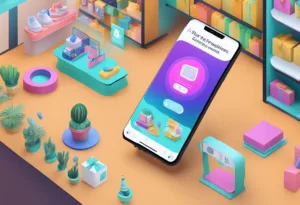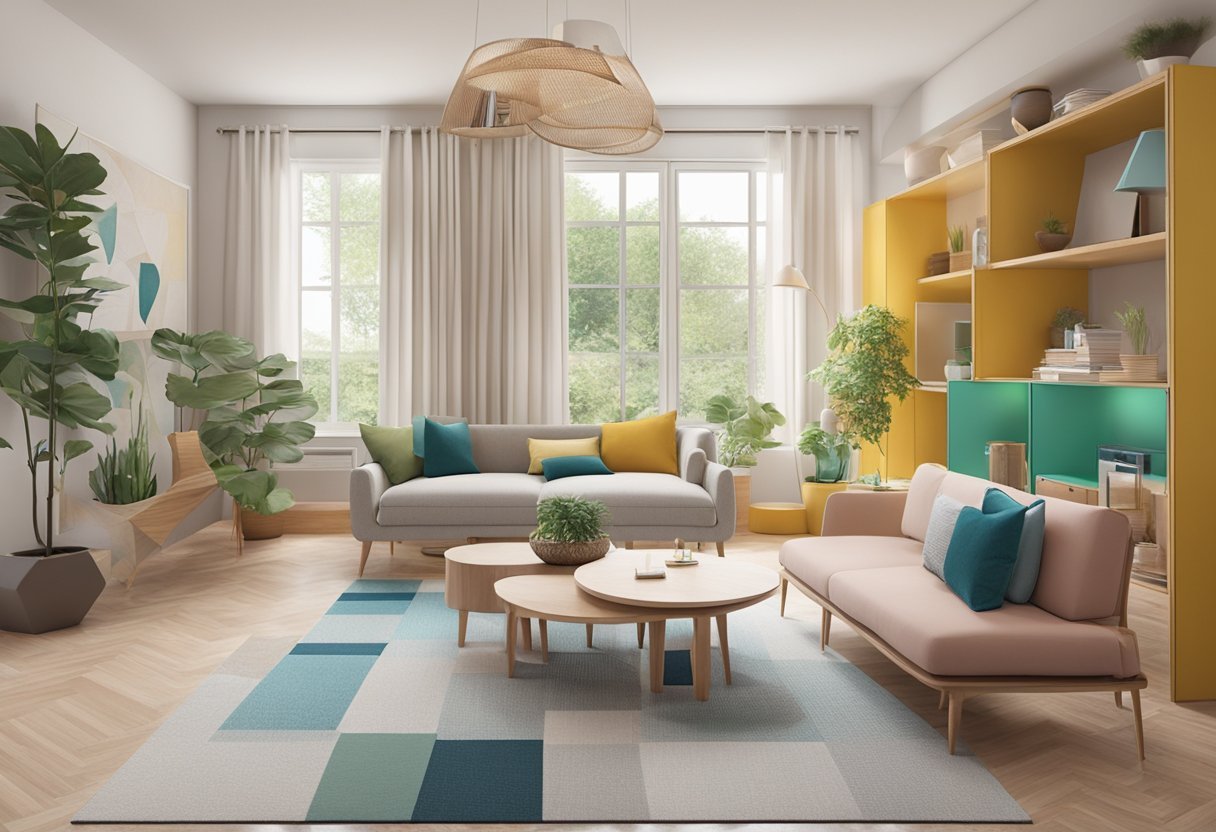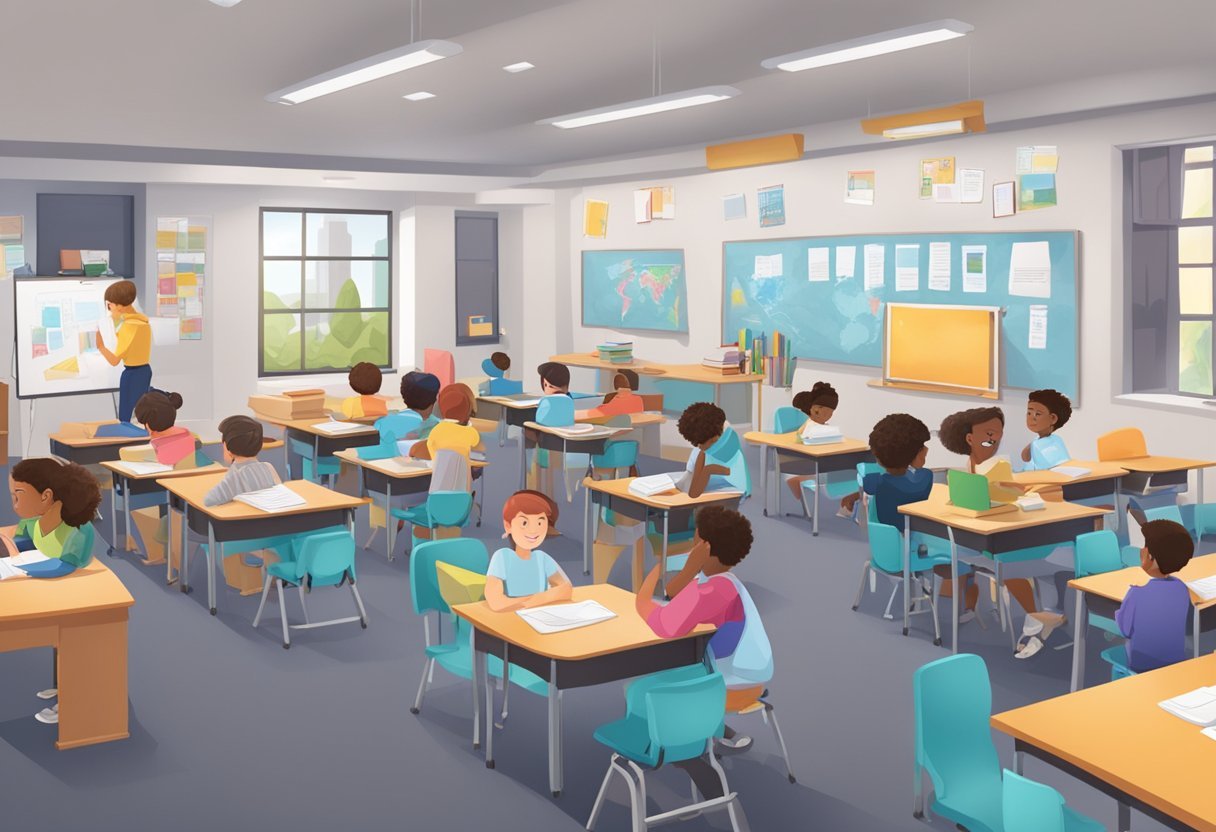Augmented Reality (AR) is a technology that has been gaining popularity in recent years, and it is now being used in advertising. AR is a type of technology that overlays digital information onto the real world. It allows users to interact with digital objects in the real world, which creates a unique and immersive experience. AR in advertising is a new and exciting way for businesses to engage with their customers. In this blog post, we will discuss AR in advertising. I will share with 20 practical AR advertising ideas to help you start.
The use of AR in advertising is still in its early stages, but it has the potential to revolutionize the way businesses interact with their customers. AR can be used to create interactive and immersive experiences that can help businesses to stand out from their competitors. AR can be used in a variety of industries, including retail, hospitality, and tourism.
Key Takeaways
- AR is a technology that overlays digital information onto the real world.
- AR in advertising is a new and exciting way for businesses to engage with their customers.
- AR can be used to create interactive and immersive experiences that can help businesses to stand out from their competitors.
The Evolution of AR in Advertising
Augmented Reality (AR) has come a long way since its inception, from being a mere novelty to becoming a mainstream technology in the advertising industry. Initially, AR was considered a gimmick, but with the advancements in technology, AR has become a powerful tool for brands to engage with their target audience. AR has revolutionized the way brands interact with their customers, offering immersive and interactive experiences that leave a lasting impression.
AR has been widely adopted by several big brands, including IKEA, which launched its AR-based app, IKEA Place, allowing customers to visualize furniture in their homes before making a purchase. Snapchat has also integrated AR into its platform, allowing users to add filters and lenses to their photos and videos. Pokémon Go, the popular mobile game, also utilized AR to create an immersive gaming experience.
Key Milestones in AR Advertising
The AR market has witnessed significant growth over the years, with the technology evolving at a rapid pace. The following are some key milestones in AR advertising:
- In 2009, BMW launched an AR-based print ad campaign that allowed customers to view a 3D model of the car by pointing their smartphone at the ad.
- In 2012, Lynx, a men’s grooming brand, launched an AR-based campaign that allowed customers to see what they would look like with a new hairstyle.
- In 2016, Nivea launched an AR-based print ad campaign that allowed customers to apply sunscreen to a virtual model of themselves to see how it would look in real life.
- In 2017, Pepsi launched an AR-based campaign that allowed customers to interact with a virtual vending machine and win prizes.
These milestones demonstrate the potential of AR in advertising and how brands have leveraged the technology to create engaging experiences for their customers. As AR continues to evolve, it is expected to become an even more integral part of the advertising industry, offering new and exciting opportunities for brands to connect with their target audience.
20 Practical AR Advertising Ideas

- Virtual Try-On for Eyewear: Customers can see how different glasses and sunglasses look on their faces before making a purchase.
- Interactive Billboards: Passersby can scan billboards to unlock 3D animations, games, or exclusive content related to the advertisement.
- AR-Enabled Product Packaging: Scanning a product’s packaging with a smartphone can reveal product information, how-to-use videos, or brand stories.
- Virtual Furniture Placement: Shoppers can visualize how furniture would fit and look in their homes directly from a retail app.
- Footwear Customization Preview: Customers can customize shoes with colors and patterns and see their designs in AR before buying.
- AR Car Showroom: Car buyers can explore different car models, colors, and features from an app, placing life-sized models in their driveway or garage.
- Interactive Menus: Restaurant menus that, when scanned, show dishes in 3D, making it easier for customers to choose their meal.
- Travel Destination Previews: Travel agencies can offer AR experiences that give potential tourists a virtual tour of destinations or hotels.
- Virtual Makeup Trials: Beauty brands can provide an AR app for customers to try on makeup shades and styles on their live image.
- Historical Site Enhancement: Tourists at historical sites can use AR to see reconstructions or stories of the past overlaid on the current ruins.
- Interactive Movie Posters: Scanning a movie poster to watch trailers, see character bios, or unlock behind-the-scenes content.
- AR Treasure Hunts in Malls: A gamified shopping experience where customers find and collect virtual items for discounts or prizes.
- Virtual Fitting Rooms for Clothing: Shoppers can try on outfits virtually to see how clothes fit and look without physically changing.
- Augmented Reality Business Cards: Scanning a business card can display a 3D portfolio, video greeting, or interactive resume.
- AR Street Art: Walls or public spaces become canvases for AR art that can be changed regularly, keeping the urban landscape exciting.
- Interactive Book Covers: Readers can scan book covers to access author interviews, animated summaries, or exclusive content.
- Virtual Concerts on Product Cans: Beverage companies can offer virtual concerts or performances when customers scan their drink cans.
- Augmented Reality Learning Materials: Educational content that comes to life, providing interactive 3D models for complex scientific concepts.
- Interactive Charity Campaigns: Donors can see the direct impact of their donations through AR visualizations of the charity work.
- Virtual Home Improvement Visualizer: DIY shoppers can see how different paints, fixtures, or materials will look in their actual space before buying.
Technological Foundations of AR Advertising

Augmented Reality (AR) advertising is a cutting-edge technology that has the potential to revolutionize the advertising industry. AR technology has its foundations in computer vision, which is the process of allowing computers to interpret and understand visual data from the world around them. AR technology uses computer vision to create an immersive experience that overlays digital content onto the real world.
AR Technology and Software
AR technology relies on the use of specialized software development kits (SDKs) that enable developers to create AR applications. These SDKs include tools for creating 3D models, tracking objects in real-time, and rendering digital content onto the real world. Some of the popular AR SDKs include ARKit by Apple, ARCore by Google, and Vuforia by PTC.
AR software development requires a high level of expertise in computer vision, 3D modeling, and software engineering. This has led to the emergence of specialized AR development companies that offer AR development services to businesses.
Mobile AR and Device Proliferation
The proliferation of smartphones and other mobile devices has played a significant role in the growth of AR advertising. Mobile AR applications allow users to experience AR content on their smartphones and other mobile devices, making AR accessible to a wider audience.
The use of mobile AR has also led to the development of new advertising formats that are specifically designed for mobile devices. These formats include interactive ads that allow users to engage with AR content, such as 3D models, videos, and games.
AR advertising is a rapidly evolving field that is driven by the technological foundations of AR technology and software development. The proliferation of smartphones and other mobile devices has also played a significant role in the growth of AR advertising. As AR technology continues to evolve, it is likely that we will see new and innovative advertising formats that are specifically designed for AR.
AR Strategies for Effective Marketing

Augmented reality (AR) technology offers a unique opportunity for marketers to create engaging and interactive campaigns that can help build brand awareness and emotional connections with their target audience. By leveraging AR technology, businesses can create immersive experiences that allow customers to interact with products and services in a way that was not possible before.
Interactive Campaigns and Engagement
One of the most effective ways to use AR in marketing is by creating interactive campaigns that engage customers in a unique and memorable way. For example, a furniture retailer can use AR to create a virtual showroom that allows customers to place furniture in their own homes and see how it looks before making a purchase. This type of interactive experience can help build brand awareness and emotional connections with customers, leading to increased sales and loyalty.
Another example of an interactive AR campaign is a scavenger hunt that takes place in a physical store. Customers can use their smartphones to scan AR codes placed throughout the store, revealing clues and rewards along the way. This type of campaign can help drive foot traffic and create a fun and engaging experience for customers.
Leveraging Emotional Connections
AR can also be used to create emotional connections with customers by leveraging storytelling and other creative techniques. For example, a cosmetics brand can use AR to create a virtual makeup tutorial that allows customers to try on different looks and learn about new products. This type of experience can help create an emotional connection with customers by allowing them to see themselves in a new way and feel more confident about their appearance.
Another example of an emotional AR campaign is a virtual tour of a company’s manufacturing facilities. This type of experience can help customers feel more connected to the brand by giving them a behind-the-scenes look at how products are made and the people behind the process.
AR technology offers a unique opportunity for marketers to create engaging and interactive campaigns that can help build brand awareness and emotional connections with their target audience. By leveraging AR technology, businesses can create immersive experiences that allow customers to interact with products and services in a way that was not possible before, leading to increased sales and loyalty.
AR in Different Industries

Augmented Reality has found its way into different industries, and advertising is one of them. AR technology has opened up new possibilities for advertisers to create immersive experiences that engage customers and drive sales. In this section, we will explore how AR is being used in different industries to create compelling advertising campaigns.
Retail and E-Commerce
AR technology has transformed the way retailers and e-commerce businesses market their products. By leveraging AR, retailers can create virtual try-on experiences, allowing customers to see how products look and feel before making a purchase. This technology has been particularly useful in the fashion industry, where customers can try on clothes and accessories virtually and get a feel for how they look in different outfits.
AR technology has also been used in the retail industry to create interactive product displays. With AR, retailers can create virtual product demonstrations, allowing customers to see how products work and interact with them in real-time. This technology has been particularly useful in the electronics industry, where customers can interact with gadgets and appliances before making a purchase.
Automotive and Real Estate
AR technology has also been used in the automotive and real estate industries to create immersive experiences for customers. In the automotive industry, AR technology has been used to create virtual test drives, allowing customers to experience the thrill of driving a car without leaving the showroom. This technology has been particularly useful in the luxury car market, where customers can experience the driving experience of high-end cars.
In the real estate industry, AR technology has been used to create virtual property tours, allowing customers to walk through properties and get a feel for the space before making a purchase. This technology has been particularly useful in the luxury real estate market, where customers can experience the grandeur of high-end properties.
Entertainment and Gaming
Finally, AR technology has also been used in the entertainment and gaming industries to create immersive experiences for customers. With AR, game developers can create virtual worlds that interact with the real world, allowing players to experience games in a whole new way. This technology has been particularly useful in the mobile gaming industry, where games can be played on mobile devices and interact with the real world.
AR technology has also been used in the entertainment industry to create interactive experiences for audiences. With AR, performers can create virtual stage shows, allowing audiences to experience concerts and performances in a whole new way. This technology has been particularly useful in the music industry, where performers can create immersive experiences for fans.
AR technology has found its way into different industries, and advertising is one of them. By leveraging AR technology, advertisers can create immersive experiences that engage customers and drive sales. From retail and e-commerce to automotive and real estate, AR has transformed the way businesses market their products. As technology continues to evolve, we can expect to see even more innovative uses of AR in advertising.
Challenges and Considerations in AR Advertising
Augmented Reality (AR) advertising is a relatively new technology that has the potential to revolutionize the way businesses market their products. However, there are several challenges and considerations that marketers must navigate when implementing AR campaigns.
Balancing Cost and Investment
One of the biggest challenges in AR advertising is balancing cost and investment. AR campaigns can be expensive to create, and the return on investment (ROI) is not always guaranteed. Marketers must carefully consider the cost of creating an AR campaign and weigh it against the potential ROI.
To mitigate this challenge, marketers can start with smaller, more affordable AR campaigns to test the waters and see how customers respond. They can also work with AR experts to develop cost-effective campaigns that still deliver a high-quality experience.
Technical Challenges and Skills
Another challenge in AR advertising is the technical skills required to create an effective campaign. AR campaigns require specialized skills in areas such as 3D modeling, animation, and programming. Marketers must either have these skills in-house or work with external partners who possess them.
AR campaigns require technical infrastructure to function properly. Marketers must ensure that their campaigns are compatible with a range of devices and platforms, which can be a complex and time-consuming process.
To overcome these challenges, marketers can work with experienced AR developers who have the necessary technical expertise. They can also invest in training and development programs to build the skills of their in-house team.
While AR advertising has the potential to deliver a unique and engaging experience for customers, there are several challenges and considerations that marketers must navigate. By balancing cost and investment and building the necessary technical skills, marketers can create effective AR campaigns that deliver a high ROI.
Frequently Asked Questions

How are companies integrating augmented reality into their advertising strategies?
Companies are integrating augmented reality (AR) into their advertising strategies by creating interactive experiences that blend the virtual and real worlds. AR can be used to showcase products in a more engaging and immersive way, allowing customers to interact with them in a way that was not possible before. Companies are also using AR to create branded games, filters, and experiences that can be shared on social media to increase brand awareness and engagement.
What are some notable examples of augmented reality in recent advertising campaigns?
Some notable examples of AR in recent advertising campaigns include IKEA’s AR app that allows customers to see how furniture will look in their homes before they buy it, Pepsi’s AR campaign that allowed customers to play a game with their phone and a Pepsi can, and L’Oreal’s AR app that allows customers to try on makeup virtually.
What benefits does augmented reality offer to marketing efforts?
AR offers several benefits to marketing efforts, including increased engagement, improved customer experiences, and increased brand awareness. AR allows companies to create unique and memorable experiences that customers will remember and share with others. It also allows companies to showcase products in a more engaging and interactive way, which can lead to increased sales and customer loyalty.
Which companies are at the forefront of using AR for advertising purposes?
Several companies are at the forefront of using AR for advertising purposes, including IKEA, Pepsi, L’Oreal, and Toyota. These companies have created innovative and engaging AR campaigns that have increased brand awareness and engagement.
How do AR advertising campaigns differ from traditional and VR advertising?
AR advertising campaigns differ from traditional and VR advertising in several ways. Traditional advertising is typically one-way communication, while AR advertising is interactive and allows customers to engage with products in a more immersive way. VR advertising is similar to AR advertising in that it is immersive, but it requires more expensive equipment and is less accessible to customers.
What are the emerging trends in AR marketing for 2023?
Emerging trends in AR marketing for 2023 include increased use of AR in e-commerce, more personalized AR experiences, and increased use of AR in location-based marketing. Companies are also expected to use AR to create more immersive and engaging experiences that will help them stand out in a crowded marketplace.




